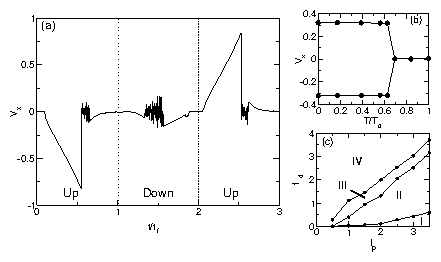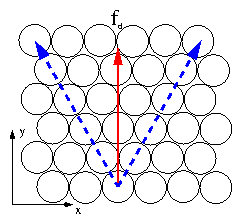 Figure 4:
(a) The transverse velocity Vx for the ramp up phase
of 0.0 < fd ≤ 4.8 for time 0 < t/tr < 1; down from fd = 4.8 to 0,
1 < t/tr < 2; and
up again to fd = 4.8, 2 < t/tr < 3.
Here tr=2.24 ×106 molecular dynamics
time steps.
(b) Transverse velocity for fixed
fd=1.0 vs T/Td.
(c) The different flow
regimes for fd vs fp.
Figure 4:
(a) The transverse velocity Vx for the ramp up phase
of 0.0 < fd ≤ 4.8 for time 0 < t/tr < 1; down from fd = 4.8 to 0,
1 < t/tr < 2; and
up again to fd = 4.8, 2 < t/tr < 3.
Here tr=2.24 ×106 molecular dynamics
time steps.
(b) Transverse velocity for fixed
fd=1.0 vs T/Td.
(c) The different flow
regimes for fd vs fp.
|
